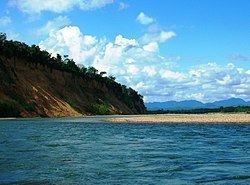Area 133,985 km² | Time zone BOT (UTC-4) Population 2.706 million (2012) | |
 | ||
Website www.gobernacionlapaz.gob.bo Clubs and Teams The Strongest, Club Deportivo y Cultural Universidad Católica Boliviana Points of interest Tiwanaku, Plaza Murillo, Valle de la Luna, The Witches' Market, Muela del Diablo Colleges and Universities Higher University of San An, Universidad Pública de El Alto, Universidad Católica Boliviana, Aquinos University, Universidad Nuestra Señora d | ||
The La Paz Department of Bolivia comprises 133,985 square kilometres (51,732 sq mi) with a 2012 census population of 2,706,359 inhabitants. It is situated at the western border of Bolivia, sharing Lake Titicaca with Peru. It contains the mighty Cordillera Real that reaches altitudes of 6.6 kilometers (4.1 mi). Northeast of the Cordillera Real are the Yungas, the steep eastern slopes of the Andes that make the transition to the Amazon basin. The capital of the department is the city of La Paz and is the administrative city and seat of government of Bolivia.
Contents
Map of La Paz Department, Bolivia
Provinces
The Department of La Paz is divided into 20 provinces (provincias) which are further subdivided into 85 municipalities (municipios) and - on the fourth level - into cantons.
The provinces with their capitals are:
Government
The chief executive office of Bolivia's departments (since May 2010) is the governor; until then, the office was called the prefect, and until 2006 the prefect was appointed by the President of Bolivia. The current governor, César Cocarico of the Movement for Socialism – Political Instrument for the Sovereignty of the Peoples was elected on 4 April 2010 and took office 30 May.
Under the 2009 Constitution, Bolivian departments have an elected legislature, the Departmental Legislative Assembly. The La Paz Assembly has 45 members including five indigenous minority representatives.
The most recent election results are as follows:
Languages
The languages spoken in the department are mainly Spanish, Aymara, Quechua and Guaraní. The following table shows the number of people belonging to the recognized group of speakers.
